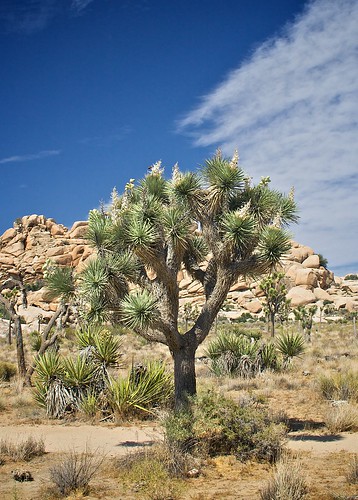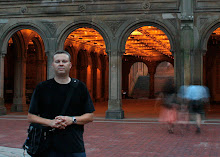You can't go to Joshua Tree and not post a pic of a Joshua Tree.
From Wikipedia
The Joshua tree or Yucca palm or Tree yucca or Palm tree yucca[1][2][3] (Yucca brevifolia) is a monocotyledonous tree native to southwestern North America, in the states of California, Arizona, Utah and Nevada. Confined mostly to the Mojave Desert between 400-1,800 m (2,000-6,000 feet), they thrive in the open grasslands of Queen Valley and Lost Horse Valley in Joshua Tree National Park. There are two subspecies,[4] including Yucca brevifolia ssp.jaegeriana Jaeger Joshua tree or Jaeger's Joshua tree[5] or Pygmae Yucca.[6] Other subspecies have been proposed but rejected by botanists, including one reduced to a form, Yucca brevifolia fa. herbertii Webber´s Yucca or Herbert Joshua
The Cahuilla Native Americans who have lived in the southwestern United States for generations still identify with this plant as a valuable resource and call it “hunuvat chiy’a” or “humwichawa”. Their ancestors used the leaves of Y. brevifolia to weave sandals and baskets in addition to harvesting the seeds and flower buds for nutritious meals.
The name Joshua tree was given by a group of Mormon settlers who crossed the Mojave Desert in the mid-19th century. The tree's unique shape reminded them of a Biblical story in which Joshua reaches his hands up to the sky in prayer. Ranchers and miners who were contemporary with the LDS immigrants also took advantage of the Y. brevifolia using the trunks and branches as fencing and for fuel for ore-processing steam engines. Its is also called Izote de desierto.[9]
Wednesday, November 5, 2008
Joshua Tree, Joshua TreeNational Park
Posted by
So Lost And Found
at
7:23 AM
![]()
![]()
Labels: California, Desert, Hot, Joshua Tree, National Park
Subscribe to:
Post Comments (Atom)


No comments:
Post a Comment